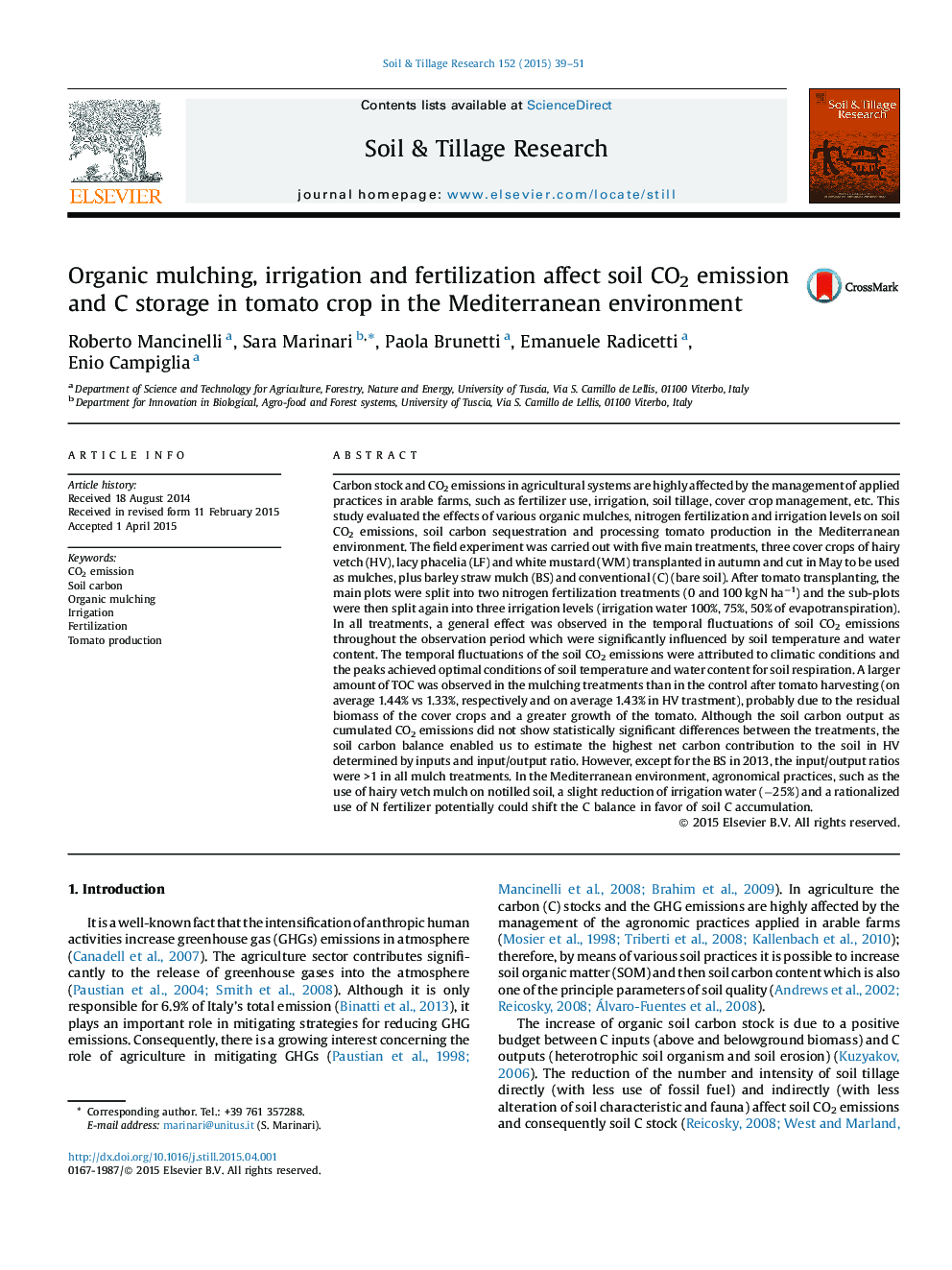| کد مقاله | کد نشریه | سال انتشار | مقاله انگلیسی | نسخه تمام متن |
|---|---|---|---|---|
| 305540 | 513033 | 2015 | 13 صفحه PDF | دانلود رایگان |

• Cover crop mulches caused a positive effect on soil CO2 emissions.
• The input/output C ratio increased with irrigation level.
• The highest input/output C ratio was observed with N fertilization.
• Soil CO2 emission depends on soil temperature and water content.
• Hairy vetch showed best effects on both tomato yield and carbon input/output ratio.
Carbon stock and CO2 emissions in agricultural systems are highly affected by the management of applied practices in arable farms, such as fertilizer use, irrigation, soil tillage, cover crop management, etc. This study evaluated the effects of various organic mulches, nitrogen fertilization and irrigation levels on soil CO2 emissions, soil carbon sequestration and processing tomato production in the Mediterranean environment. The field experiment was carried out with five main treatments, three cover crops of hairy vetch (HV), lacy phacelia (LF) and white mustard (WM) transplanted in autumn and cut in May to be used as mulches, plus barley straw mulch (BS) and conventional (C) (bare soil). After tomato transplanting, the main plots were split into two nitrogen fertilization treatments (0 and 100 kg N ha−1) and the sub-plots were then split again into three irrigation levels (irrigation water 100%, 75%, 50% of evapotranspiration). In all treatments, a general effect was observed in the temporal fluctuations of soil CO2 emissions throughout the observation period which were significantly influenced by soil temperature and water content. The temporal fluctuations of the soil CO2 emissions were attributed to climatic conditions and the peaks achieved optimal conditions of soil temperature and water content for soil respiration. A larger amount of TOC was observed in the mulching treatments than in the control after tomato harvesting (on average 1.44% vs 1.33%, respectively and on average 1.43% in HV trastment), probably due to the residual biomass of the cover crops and a greater growth of the tomato. Although the soil carbon output as cumulated CO2 emissions did not show statistically significant differences between the treatments, the soil carbon balance enabled us to estimate the highest net carbon contribution to the soil in HV determined by inputs and input/output ratio. However, except for the BS in 2013, the input/output ratios were >1 in all mulch treatments. In the Mediterranean environment, agronomical practices, such as the use of hairy vetch mulch on notilled soil, a slight reduction of irrigation water (−25%) and a rationalized use of N fertilizer potentially could shift the C balance in favor of soil C accumulation.
Journal: Soil and Tillage Research - Volume 152, September 2015, Pages 39–51